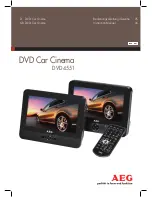
About GNSS
Satellite Navigation
19
User Manual 1178.6379.02 ─ 01
User segment
Finally, the
receiver
decodes the navigation message (ephemeris and almanac)
broadcasted by the GNSS satellites, obtains information regarding the satellites orbit,
clock, health etc. and calculates the satellites coordinates. The receiver also measures
the signal propagation time (i.e. the pseudorange) of at least four satellites and esti-
mates its own position.
4.4 How Are the GNSS Components Simulated?
In the real life, the true satellites orbit can differ from the information the satellites
breoadcast about that orbit.
In this implementation, the simulated orbit is the true orbit. Thus, the satellites motion
along their orbits, the clock they use and the current distance to each of them are refer-
red to as
simulated orbit, clock and pseudorange
. They are set as retrieved from
the constellation data source and can be configured on a per satellite basis.
The navigation message of each of the satellites is per default identical to the simula-
ted one. It is referred to as
broadcasted navigation message
, since it represents the
broadcasted satellite’s signal, see
. Per default, the broadcasted and the
simulated orbit and clock parameters match. Obviously, if the parameters in any of
those two groups are changed, a deviation between the sets is simulated.
The receiver is the device under test (
DUT
). In the simulation, the receiver is represen-
ted by its position, antenna configuration, environment, etc. The receiver is tested with
the GNSS it would receive in a real-word situation if placed in the specified conditions.
Simulation date, time and location
The R&S
SMW generates the signal for any simulation date and time, in the past or in
the future, and at any location, on the earth or in the space, for a static or moving
receiver.
You have full control over the satellites’ constellation, the satellites signals and the nav-
igation message of any of the satellites and can thus perform repeatable measure-
ments with varying complexity.
For details, see:
●
●
Chapter 7, "Receiver Type and Position"
●
Chapter 8, "Satellite's Constellation"
●
Chapter 9, "Space Vehicle Configuration"
Real-word scenarios trough environmental effects
You can also simulate various different environmental conditions, like the effect of the
receiver’s antenna characteristic, vehicle movement, vehicle body mask, multipath
propagation, obstacles or the atmosphere.
For details, see
Chapter 10, "Real-World Environment"
How Are the GNSS Components Simulated?
















































